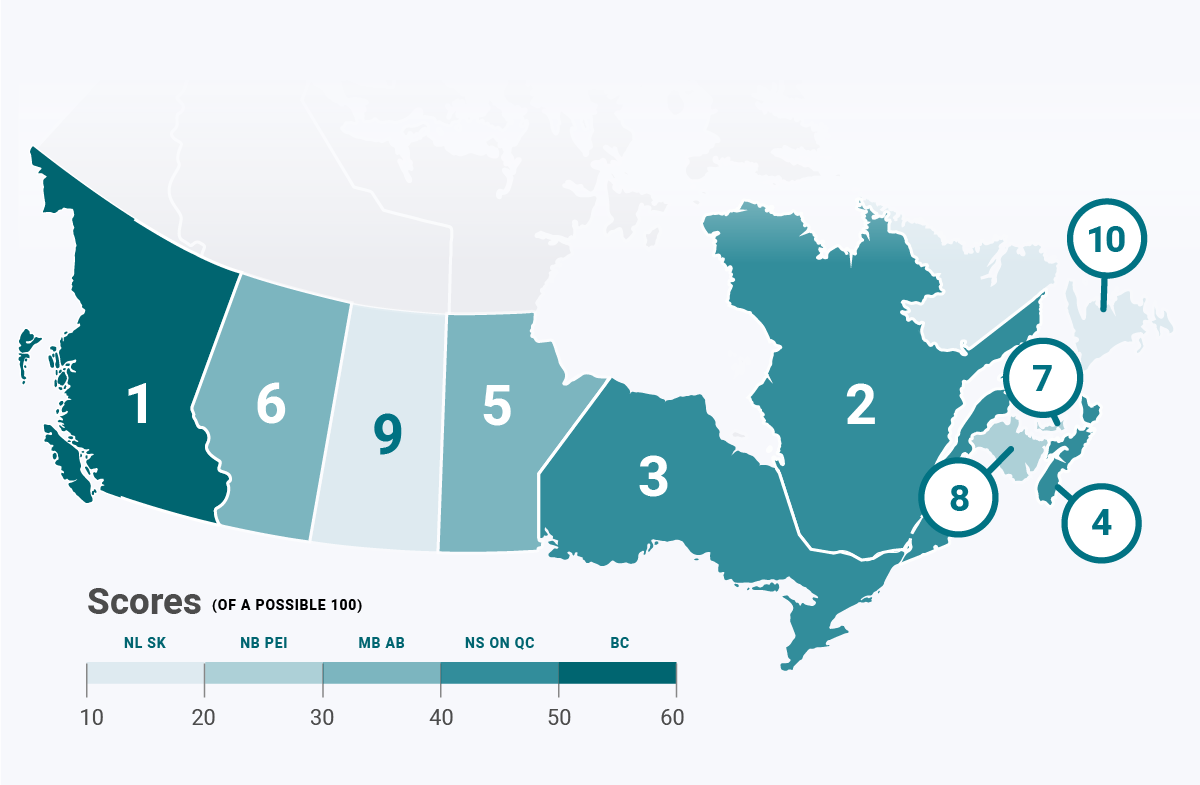Canada Energy Efficiency Scorecard 2019 - Atlantic Canada
Provincial Energy Efficiency Policy Scorecard Rankings Highlights
WRITTEN BY ANGELICA SYIEMIONG PEREIRA ∙ TORONTO, ONTARIO
Energy Efficiency is one of the best strategies to tackle climate change and help utilities avoid investing in unnecessary energy generation. The cost of new energy generation is much higher than the cost of improving the energy efficiency of homes and businesses -- and the rewards are greater. Efficiency Canada’s recently published Provincial Energy Efficiency Scorecard is a Canadian version of the U.S.’ scorecard released annually by the American Council for an Energy Efficient Economy.
The scorecard highlights and ranks each province based on 5 key metrics:energy efficiency programs, enabling policies, transportation, buildings and industry.
We’ve summarized the province-by-province highlights:
Nova Scotia
Overall Score: 45/100
Ranking: 4th
Nova Scotia was the only Atlantic province to provide comprehensive support for Combined Heat and Power deployment in industrial settings. Electricity efficiency program savings, non-regulated fuels programs and energy poverty reduction coupled with a policy framework has helped the province achieve the highest Energy Efficiency ranking in the Atlantic region and the highest energy efficiency program scores nationally. While programs keep improving, the need for better building codes for high performance buildings is even higher right now.
Market demand for Energy Advisors and Certified Energy Managers increased in Nova Scotia because of the various programs designed in the province to achieve energy reduction savings. The large number of trained professionals has enabled higher energy savings and new energy efficiency policies.
Prince Edward Island
Overall Score: 26/100
Ranking: 7th
Prince Edward Island spends the highest on energy poverty reduction, $117 was spent on each household toward reducing energy poverty last year. efficiencyPEI’s program budget supports low-income programs such as the Home Energy Low-Income Program (HELP), Home Insulation Rebates, Energy Efficiency Equipment Rebates, and the Home Comfort Program.
The Province’s 2016-2017 Energy Strategy requires both electric and non-electric fuels to save 2% of annual sales. The projected 2018-2021 Demand Side Management plan would see PEI reach its 2% savings by 2025. It also launched an energy efficiency loan program, providing loans up to $10,000. However, the province was not awarded any funding from the Natural Sciences and Engineering Research Council’s funding for energy efficiency research.
New Brunswick
Overall Score: 25/100
Ranking: 8th
The province of New Brunswick is still yet to adopt the National Building Code. While buildings are yet to develop stricter codes, New Brunswick has progressed with the adoption of fast charging capacity within their electric vehicle charging network. The charging program is run by the Province with the support of New Brunswick Power, and includes stations along major highways and in provincial parks.
In 2019 the Province conducted an efficiency potential study to develop an Integrated Resource Plan to achieve long-term targets. New Brunswick’s demand-side management activities -- which are a part of NB Powers comprehensive Energy Smart NB initiative -- take into consideration savings from all types of fuels, forecasting significant potential for energy savings.
Newfoundland and Labrador
Overall Score: 15/100
Ranking: 10th
Newfoundland and Labrador’s Municipalities Act and corresponding legislation for cities requires municipal councils to adopt the National Building Code of Canada as well as supplements and amendments to that code as it does not have its own provincial building code. Unlike PEI, Newfoundland and Labrador spends the least per household in energy poverty and has the second-highest energy poverty in the country.
TakeCharge electricity conservation programs are an effort to bring down the province’s high energy rates and reduce every household’s average bill. Newfoundland Power uses a grid management strategy to help lower power consumption and manage peak load in winter.
Check out the full report here.


